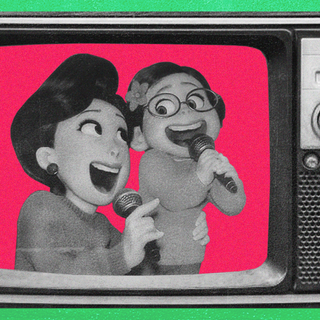In 2021, the representation of women in Hollywood — the “oldest film industry in the world” and the “largest film industry in terms of revenue” — remained dismal, according to a new study.
While the findings are hardly surprising — even in the post-#MeToo and post-#TimesUp era — what’s even bleaker is just how few Hollywood films featured more women than men versus the other way round: 7% versus 85%. Movies that had an equal number of male and female actors — a more ideal scenario, perhaps — made up just 8% of 2021’s Hollywood movies. And the share of movies with non-cis representation, we don’t even know.
While some much-talked about, leading movies last year did have women at the center, the representation is far from proportionate, the analysis highlights.
Titled “It’s a Man’s (Celluloid) World,” the study was authored by Martha Lauzen, executive director of the Center for the Study of Women in Television and Film at San Diego State University. It analyzed more than 3,000 characters from the 100 top-grossing Hollywood movies of 2021 in the U.S., alongside portrayals of women from Digital Entertainment Group’s “Watched at Home”-list, which doesn’t, however, include releases on Netflix, Amazon Prime, and Disney Plus.
The analysis found that the number of female characters who had speaking roles — i.e., women who weren’t entirely relegated to the background, possibly reducing them to the status of an object — declined: from 34% in 2021 to 36% in 2019. Female actors playing major characters — i.e., characters that “appear in more than one scene and are instrumental to the narrative of the story” — also fell from 38% in 2020 to 35% in 2021.
“Last year audiences saw almost two male characters for every female character, and although women protagonists led some of the most high-profile films including Spencer, Being the Ricardos, and The Eyes of Tammy Faye, women comprised slightly less than one-third of sole protagonists last year,” Lauzen noted.
Related on The Swaddle:
Number of Women Directing Major Hollywood Films Reached an All‑Time High in 2020
There was one small ray of hope, though: the number of movies with sole female protagonists inched to 31% of Hollywood releases in 2021 — a small rise from 29% in 2020.
When it comes to characters from minority backgrounds, too, the numbers weren’t all that better despite an increase in representations. “[T]he increases in Latinas and Asian and Asian American females in major roles are largely due to their presence in a handful of films, rather than their integration in a wide variety of films,” Lauzen added.
For instance, Asian and Asian American characters in major roles increased from 5.7% in 2020 to 10% in 2021. But if movies like Shang-Chi and the Legend of the Ten Rings, Mortal Kombat, Minari, and Raya and the Last Dragon were to be excluded from the count, the 10%-share in 2021 goes down to just 6.7%, which is hardly an uptick from 2020.
This pattern also goes on to show how rather than occupying the screen for a more uniform representation, characters from minority backgrounds are often restricted to culture-specific movies. That individuals from minority communities are spread out everywhere in this globalized world of 2021, and not just restricted to certain cocoons, is a fact worth iterating.
Women’s representation on screen is an ongoing tussle that different movie industries are dealing with, and while the trend has been improving in looking at female story arcs, the effort must be more deliberate and impactful rather than tokenistic.
Lauzen, however, tried to look at the silver lining in the latest findings, saying, “Despite the major disruptions in the film business over the last couple of years, on-screen gender ratios have remained relatively stable.”
But the question to ask ourselves is: as a society, isn’t staying stuck at the same place, a rejection of progress?




